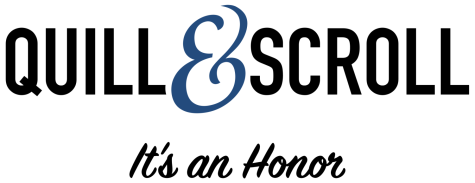Nov. 13, 2023
Our past three editions
Oct. 23, 2023 Healthcare premiums • Lunchables for lunch • WNBA champs
Oct. 16, 2023 Montana climate change • Antisemitism • Book bans
Oct. 9, 2023 Campus safety • Climate change • Coffee in Britain
THE LEDE
Time to rethink those steering wheel rhinestones
Side coverage could include winter emergency kit
Drivers should rethink that bedazzled steering wheel according to a new report from The National Highway Traffic Safety Administration.
Steering wheel rhinestones and other decorative items affixed can turn into projectiles that cause injury when an airbag activates during a car crash.
What you can do —
The most obvious coverage is to educate drivers on this issue.
Coverage could include a sidebar on what to have in your vehicle as winter nears. Of course, this is dependent on where you live. Those of you in Miami probably won’t need what we keep in our trunk up here in Minnesota.
Noteworthy
AI used to create fake videos
Great time to educate about harm
A teen at a local high school in New Jersey used AI to create fake nude photos of several female classmates. Currently, no federal laws exist concerning the sharing of or creation of nonconsensual deep fake pornography.
The teen in the video talks about how this has impacted her and how it has made her feel.
What you can do —
Not only is it a great time to check on what legislation might be in the works to protect teens from this — although we shouldn’t need it — it is time to address the impact and effect this could have on those targeted. Also, talk to administrators at your school concerning this and other types of cyberbullying and harassment.
Talk to a psychologist and school counselors concerning the harm that is done to those targeted and how students can report such instances. Interview school administrators and about how concerning school policies, guidelines and procedures they may be revamping to help with any such issue.
What’s viral
Teen average screentime up according to recent Gallup survey
When social media use and homework collide, screens often win
A new Gallup survey of U.S. teens found the average secondary-aged student spends about 4.8 hours per day on social media — and this number is higher for 17-year olds, who spend an average of 5.8 hours per day on social media. The most popular app wasn’t TikTok. It was YouTube, which the teens in the survey reported spending an average of 1.9 hours per day viewing.
And yes, teens also report they spend more time on social media than on homework.
What’s more distressing is that those who spent five hours or more on social media per day reported they were more likely to have sadness and even suicidal thoughts than those who spent less time on these platforms.
What you can do —
Of course, a poll of your students and social media use is a great start.
For those who claim “just don’t have time” for homework, job, other obligations, etc., it might be worth an article that shows teens how to self-regulate their social media use. Having a few students track their social media use would be interesting. A follow up question could involve if/how they would have liked to use the time differently. Did they do more homework? Spend more time with friends or family?
Another would be to have several students agree not to use social media for a day, three days and then a week. It might be interesting to juxtapose this with the social media log of their previous use. Did not using social media improve their mental health? (Pair this with a psychologist who could talk about this issue.)
Teachers, it might be a great time to have students log what they use and what they see. Last week, the Scroll had information about propaganda in social media. A media literacy lesson plan would be to have students document where they are getting their information, research the source and evaluate if it’s a credible source for the information given. Teachers could expand to include the ads in the feeds as well and what they buy on the social media apps. (One report said 48% of GenZ will do holiday shopping on social media)
Another content idea would be to talk to a social media expert concerning how to self-regulate screentime and to talk to parents who limit teen social media use.
IT’S AN HONOR
It’s always membership season
Don’t forget you can nominate members year round
Our fall order season has begun. Don’t be left out in the cold. Nominate students for membership order pins, cords and other Quill and Scroll materials and memorabilia.
We haven’t changed the ordering process from last year. For those wanting to ditch the paper version, you just need to select the form based on how you would like to pay. We have one version for credit card and another version for check or purchase order. (We’ve added buttons for ease of finding these.) As usual, credit card payments are charged $4.49 per order for processing.
Scroll publishing will hold for next week, week after
We will not be publishing the Weekly Scroll during traditional school breaks. So, we will not be publishing the Scroll during the week of Nov. 20 and Nov. 27 because of the Thanksgiving break. We will publish Scrolls again Dec. 4 and 11.
For those looking ahead, we will also not publish the Scroll Dec. 18, Dec. 25 and Jan. 1 because of winter breaks. We will resume publishing Jan. 8.
Quill and Scroll offices will close Nov. 22-24, but we will return Nov. 25.
Meet, collaborate and discuss with peers
Quill and Scroll’s Student Journalism Collaboration Program, which is a discussion forum for students, will continue hosting discussion forums this school year.
The Student Journalism Collaboration Program aims to connect student journalists from across the nation. Through virtual meetings, participants will discuss, collaborate and troubleshoot with their peers about scholastic journalism issues pertaining to their student media.
Please fill out this form by noon Central today. I’ll send out the link again for today’s signups at 1 p.m. Central today.
Our first meeting will take place tonight from 7-8 p.m. Central, and our topic of discussion will be approaching common challenges in workflow as well as a quick look at the structure of student media. Once students fill out the form, they will automatically receive a notification for all subsequent meetings. Participants who signed up prior to today received a Zoom link Sunday.
The next meeting will be Dec. 11 from 7-8 p.m. Central and our topic will be fundraising. Use the same form to sign up.
We look forward to seeing you!
Sorry advisers, this is a student-only offering.
Plan for upcoming awards
Yes, we are awaiting our Yearbook Excellence Contest results and it’s time to start the process for our Writing, Photo and Multimedia Awards. This contest will be open late November and all entries and payments will be due Feb. 2.
So, start thinking about what you want to enter. We will publish the categories on our website within the next week. For those who entered last year, we will have the same submission process as last year.
First Amendment Press Freedom Award entries due Dec. 15
The Journalism Education Association has opened applications for the First Amendment Press Freedom Award.
This award recognized schools who actively support and honor the First Amendment through its student media programs. The award focuses on press freedom and a jury looks at the entire student media program at the school: digital and print newspaper, yearbook and student broadcast.
Round One questions must be completed by a student editor and an adviser or administrator filling out separate forms. Please read and respond carefully to Round One questions. Even if your school has received FAPFA recognition before, you must reapply each year.
Information and Round One submission forms for the First Amendment Press Freedom Award are available at this link.
Chapter activity/discussion point idea/curriculum idea
While it’s a tough lesson, there’s a lot of talk about truth in the news coming out of the Middle East. Several news organizations and Columbia Journalism Review have addressed this as well.
For an activity (or even a lesson plan) you could ask the students to pull up the following links that address this. Have them report back to the group on what they see. (Warning, there’s a bit of overlap.)
AP link
Reuters link
New York Times link
CJR link: also has information comparing what is found on Meta vs. X vs. YouTube.
Three closing questions for this:
How does this make you question some of what you see on social media?
How do we as student journalists help educate teens on media literacy?
How might you use resources such as NAMLE to help educate others?
Just a thought
When I taught, my favorite times were when my students stepped up and just took care of whatever we needed.
I am thankful to have had this experience again.
Thanks to Talia Lissauer and Marta Hill who spent two days helping with the Quill and Scroll booth in Boston when I needed a little help. These two are studying journalism in Boston and eagerly agreed to help when I asked.
Teaching can be difficult and trying. During some of your downtime within the next few weeks, take time to think about not only those you are working with and their impact on you, but also those who you have worked with before. (I kept all our staff sweatshirts and shirts and whenever I find one hidden in my closet, I see the list of names and smile — a lot.)
Thanks for all you do, and I wish you a wonderful holiday season.
— Lori Keekley





